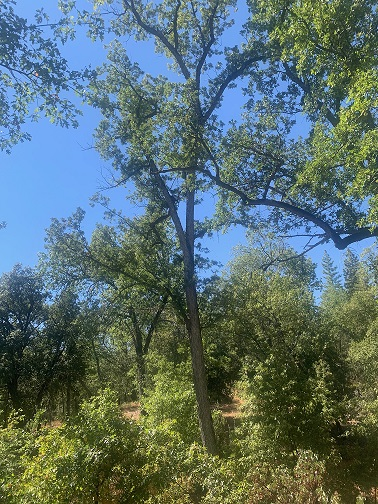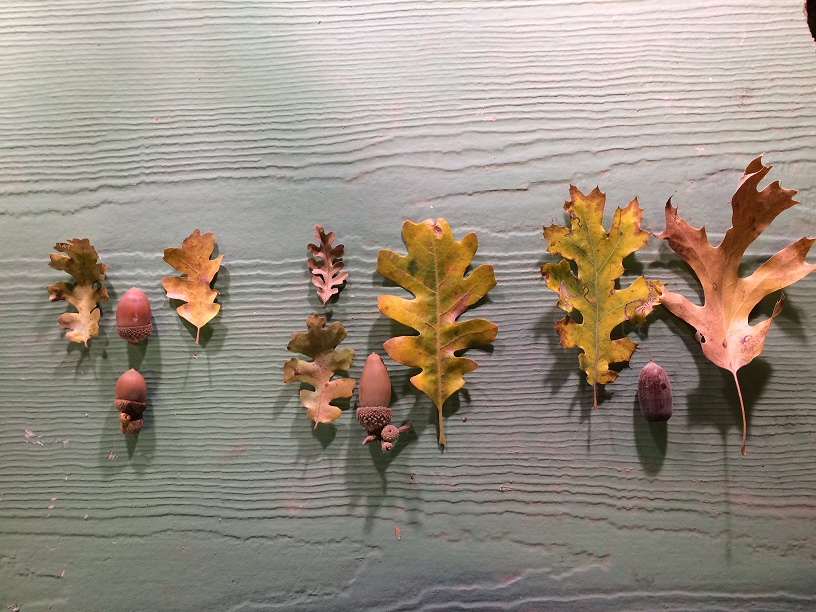

Old growth Valley Oak late summer near Midpines, CA.
Photo copyright © 2024 Mariposa Native Plants
The Valley Oak is the largest oak tree in California and arguably the largest oak tree in North America. It is found in the Coast Range from Mendocino southward to Baja California and on the western slope of the Sierra Nevada from Redding south to the Transverse Ranges and around the Los Angeles area.
Both the Valley Oak and the Black Oak (Q. kelloggii) have deeply lobed leaves. The leaf of the Valley Oak has rounded tips on the lobes, whereas the Black Oak has pointed tips. The Black Oak leaves are much larger--at least on a mature tree--than the Valley Oak leaves. The Valley Oak is deciduous, and it has rather large, bullet- shaped acorns. The Valley Oak often has a V-shaped trunk, a mnemonic key to identifying the tree. Less common in the Central Sierra is the Oregon White (Garry's) Oak. It has a leaf similar in shape to the Valley Oak, but the acorn is a small, button- shaped seed, about the size of a small marble.

Oregon White (Garry's) Oak leaf (left), Valley Oak (middle), and Black Oak (right). Photo copyright © 2019 Mariposa Native Plants
Elevation: sea level to 6,000 feet, most often in arroyos and alongside streams and rivers. It prefers to be near a water source. Sun: partial or full. Temperature: cold tolerant to -20°F (-30°C). Soil: loamy or sandy; pH 5-8.
Oak trees are difficult to transplant, because of their sensitive roots. This tree needs a site that is near water and has full or partial sunlight available. The roots are sensitive to disturbance; avoid breaking the root ball when planting from the container. The best times to plant them from a container is in the fall or winter, as late as the beginning of February. If the ground is dry, drench the ground around the tree with water after planting, making sure that the top of the root ball is level with ground around the tree. It is helpful to dig the hole down several inches below where the root ball will sit and fill it with loose, original soil, so as to better facilitate penetration by the oak tap root. Planting acorns is more reliable as a method for establishing Valley Oak on a landscape. It is also prudent to install a wire screen around the tree, attached to a firmly-planted stake, for the first few years; this prevents browsing by herbivores (especially deer). Water (2 gallons, 8 liters) once per week in the first summer. Water no more than once per month, in the same amounts, in the second summer. Thereafter, no supplemental water should be required. If the third spring before summer is especially dry, then water in the third summer as in the second. Thereafter, no supplemental water should be required. Nota bene: Established California native oak trees should never be watered in the warm spring, summer, and fall months.
Seedlings in deep tree pots and acorns (12/bag) beginning in late summer.